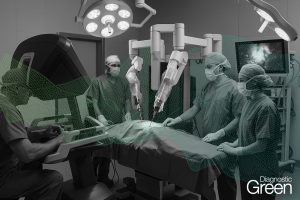Purpose: To study the clinical presentation and treatment outcomes of indocyanine green-enhanced transpupillary thermotherapy (ICG-TTT) for treatment-naïve juxtapapillary retinal capillary hemangioblastoma (JRCH).
Methods: A prospective interventional case series. The technique involved ICG dye infusion 45 seconds prior to application of TTT. The main study outcomes were local tumor control, resolution of subretinal fluid (SRF), and improvement in best-corrected visual acuity (BCVA).
Results: Eight eyes of seven patients (5 males and 2 females) were included. The mean age was 26 years (range: 5-56 years). Systemic evaluation revealed von-Hippel Lindau (VHL) disease in five patients. The most common location was the temporal aspect of the optic disc (5 eyes). The mean basal diameter was 2.9 mm (range: 1-8 mm), and tumor thickness was 1.4 mm (range: 1-4 mm). All eight eyes were treated with multiple sessions of ICG-TTT (mean: 3 sessions). Six eyes received adjuvant intravitreal injection of dexamethasone implant (4 eyes) and/or bevacizumab (4 eyes). Post treatment, six eyes (75%) had tumor regression with reduction of SRF. One eye had a partial response with persisting SRF, and one eye showed poor response to TTT for which external beam radiotherapy was performed. At the last follow-up (median: 11 months; range: 6-29 months), the BCVA remained stable in seven eyes and improved in one eye (hand motion to 20/40).
Conclusion: Multiple ICG-TTT sessions can be considered as an alternative treatment option for JRCH with effective local tumor control and SRF resolution.
https://journals.lww.com/ijo/abstract/9900/indocyanine_green_enhanced_transpupillary.125.aspx




